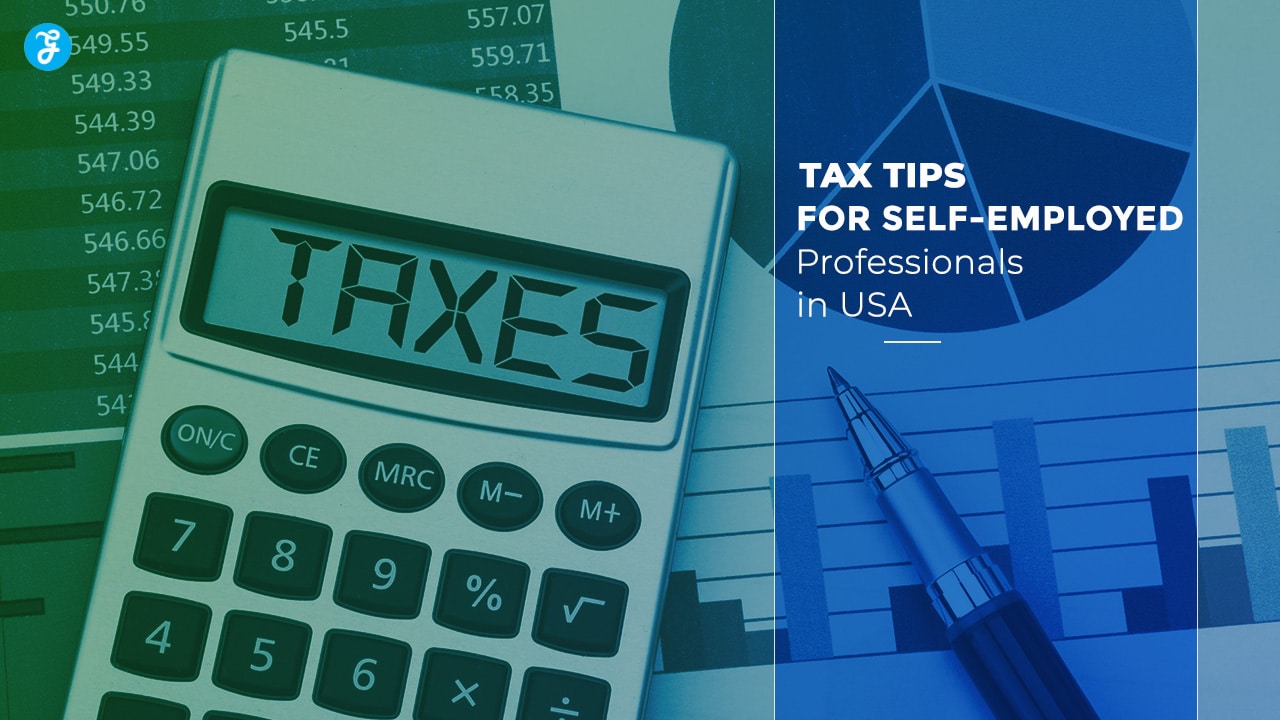Managing taxes as a self-employed professional can feel overwhelming. Whether you are a freelancer, consultant, or small business owner, understanding tax rules and opportunities to save money is crucial.
Unlike salaried employees, self-employed individuals need to handle their tax payments, deductions, and IRS compliance independently. With proper planning, you can lower your tax burden, maximize deductions, and avoid penalties.
This article provides 12 actionable tax tips for self-employed professionals in the USA to help you navigate tax season and save money.
1. Understand Your Tax Obligations
If you are self-employed, the IRS considers you both an employer and an employee. This means you are responsible for paying self-employment tax, which includes contributions to Social Security and Medicare.
Key Points:
- Self-Employment Tax Rate: 15.3% (12.4% for Social Security and 2.9% for Medicare).
- You need to file taxes if your net earnings exceed $400 per year.
- Unlike employees, self-employed individuals must pay taxes quarterly.
Quarterly Tax Payment Schedule for 2025:
| Period | Payment Due Date |
| January 1 – March 31 | April 15, 2025 |
| April 1 – June 30 | June 15, 2025 |
| July 1 – September 30 | September 15, 2025 |
| October 1 – December 31 | January 15, 2026 |
Understanding your obligations helps you avoid late payment penalties and interest. Use IRS Form 1040-ES to estimate your quarterly taxes.
2. Keep Accurate Records of Income and Expenses
One of the keys to managing taxes as a self-employed professional is maintaining accurate records. The IRS requires detailed documentation to validate your income and deductions during tax filing or audits.
Tips for Record-Keeping:
- Use bookkeeping tools like QuickBooks, FreshBooks, or Wave.
- Track all business-related expenses, such as office supplies, software subscriptions, and travel costs.
- Store both physical and digital receipts for easy access during tax season.
| Record Type | Examples |
| Income | Client invoices, contracts |
| Expenses | Office supplies, software |
| Mileage | Work-related travel logs |
| Receipts | Business purchases |
3. Maximize Your Deductions
The IRS allows self-employed individuals to deduct ordinary and necessary expenses related to their business. These deductions lower your taxable income, saving you money.
Common Self-Employed Deductions:
| Deduction | Details |
| Home Office Deduction | A portion of rent, utilities, and insurance |
| Travel Expenses | Flights, hotels, meals for work trips |
| Equipment and Supplies | Computers, printers, and software |
| Health Insurance | Premiums for self-employed individuals |
| Vehicle Mileage | Business use of your car (56 cents/mile) |
Example: If your income is $60,000 and you claim $10,000 in deductions, you will only pay taxes on $50,000.
4. Separate Personal and Business Finances
Mixing personal and business finances can complicate your tax filing and invite IRS scrutiny. Open a separate business bank account to manage income and expenses more efficiently.
Benefits of Separating Finances:
- Simplifies tracking deductible expenses.
- Provides clean records in case of IRS audits.
- Makes bookkeeping and tax preparation easier.
Pro Tip: Consider getting a business credit card to streamline business purchases.
5. Take Advantage of Retirement Plans
As a self-employed professional, you can contribute to retirement plans while reducing your taxable income.
Retirement Options:
| Plan | Contribution Limit (2025) | Details |
| SEP-IRA | Up to $66,000 | 25% of net earnings |
| Solo 401(k) | Up to $23,000 + $7,500 | Additional catch-up contributions if over 50 |
| Traditional IRA | Up to $7,000 | Tax-deductible contributions |
Contributing to a retirement plan helps you save for the future while lowering your current tax liability.
6. Use the Home Office Deduction Correctly
If you work from home, you may qualify for the home office deduction. This deduction applies to areas of your home exclusively used for business purposes.
Home Office Deduction Methods:
| Method | Details |
| Simplified Method | $5 per square foot (up to 300 sq ft) |
| Actual Expense | Percentage of actual expenses (utilities, rent) |
To avoid mistakes, ensure the area is used only for work, not personal activities.
7. Deduct Health Insurance Premiums
Self-employed professionals can deduct health insurance premiums paid for themselves, their spouse, and dependents.
Eligibility:
- You must have a net profit for the year.
- The deduction cannot exceed your business income.
This deduction is a significant tax break, helping you reduce taxable income.
8. Understand Quarterly Estimated Taxes
Unlike employees who have taxes withheld, self-employed professionals need to pay estimated taxes quarterly.
How to Calculate Estimated Taxes:
- Estimate your annual income and expenses.
- Use IRS Form 1040-ES to calculate your payments.
- Pay by the deadlines to avoid penalties.
9. Hire a Tax Professional or Use Tax Software
Managing self-employment taxes can be complicated. Hiring a CPA or using tax software ensures accurate filings.
Top Tax Software for Self-Employed:
| Software | Features |
| TurboTax | Easy-to-use, guided filing |
| H&R Block | Affordable with professional help |
| TaxAct | Budget-friendly with great tools |
10. Know the Difference Between Business and Personal Expenses
Avoid claiming personal expenses as business deductions, as this can trigger IRS audits.
Examples:
- Business Expense: Office supplies, client travel.
- Personal Expense: Groceries, family vacations.
Tip: Keep receipts to prove your expenses are business-related.
11. Claim Mileage and Travel Expenses
If you use your car for work purposes, you can deduct mileage or actual car expenses.
2025 Standard Mileage Rate:
- 56 cents per mile for business use.
| Deductible Expenses | Examples |
| Mileage | Work meetings, client visits |
| Travel | Flights, lodging, meals |
12. Plan for Tax Season Early
Avoid last-minute stress by preparing for tax season in advance.
Tips:
- Use a checklist to organize income and deductions.
- Mark tax deadlines on your calendar.
Takeaways
Managing taxes as a self-employed professional in the USA can be challenging, but these 12 tips will help you navigate the process effectively. From understanding self-employment tax to maximizing deductions and planning for retirement, these strategies can save you time, stress, and money. Start implementing these tips today to stay compliant with IRS rules and keep more of your hard-earned income.
If you’re unsure about tax laws, consider working with a tax professional or using reliable tax software. Proper planning and organization will make tax season much easier.
Frequently Asked Questions (FAQs)
1. What is self-employment tax?
Self-employment tax covers Social Security and Medicare contributions at a rate of 15.3%.
2. Can I deduct my home office expenses?
Yes, if you use the space exclusively for business purposes.
3. How do I calculate estimated taxes?
Use IRS Form 1040-ES to estimate and pay quarterly taxes.







































